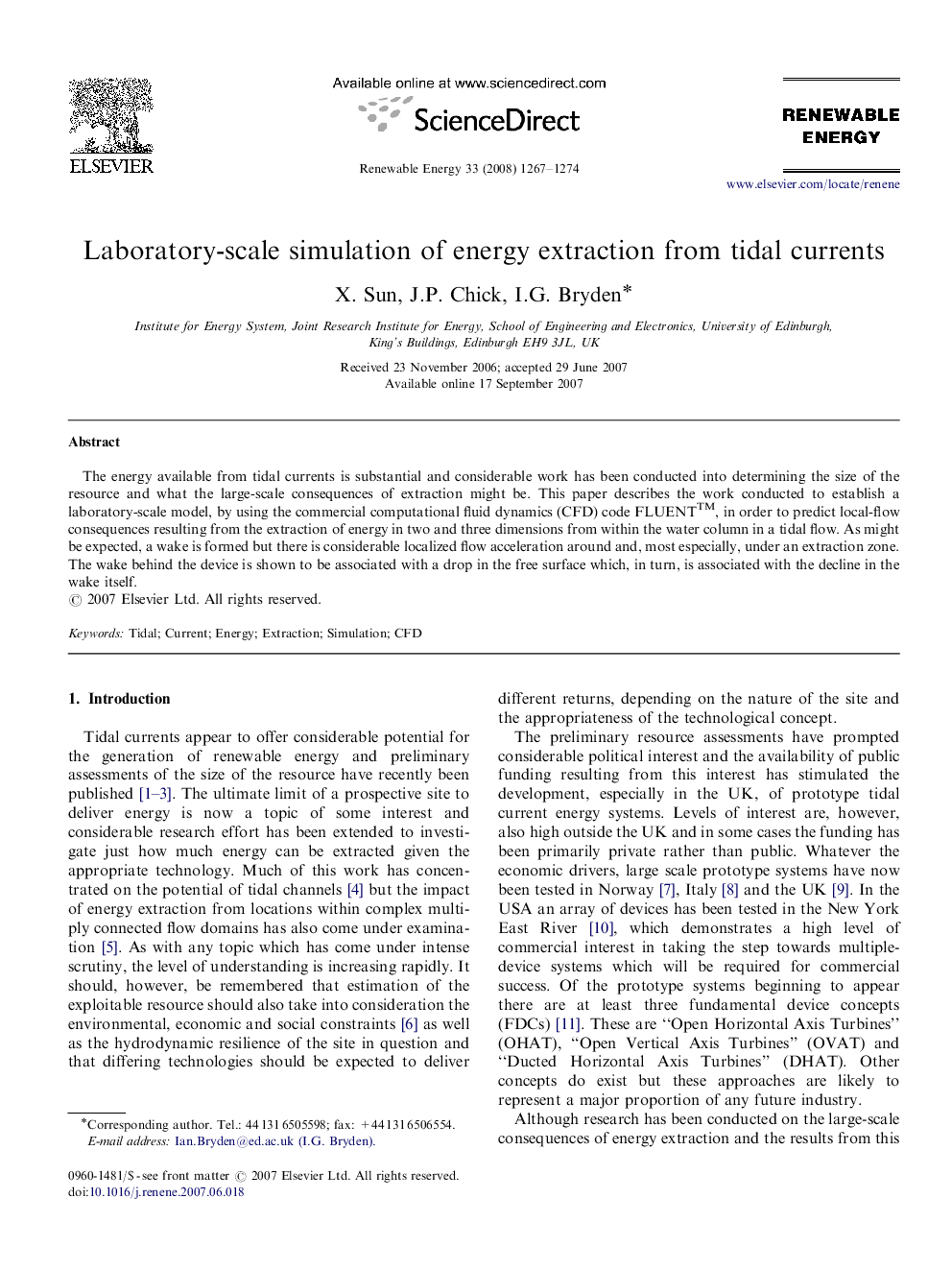| Article ID | Journal | Published Year | Pages | File Type |
|---|---|---|---|---|
| 302749 | Renewable Energy | 2008 | 8 Pages |
The energy available from tidal currents is substantial and considerable work has been conducted into determining the size of the resource and what the large-scale consequences of extraction might be. This paper describes the work conducted to establish a laboratory-scale model, by using the commercial computational fluid dynamics (CFD) code FLUENT™, in order to predict local-flow consequences resulting from the extraction of energy in two and three dimensions from within the water column in a tidal flow. As might be expected, a wake is formed but there is considerable localized flow acceleration around and, most especially, under an extraction zone. The wake behind the device is shown to be associated with a drop in the free surface which, in turn, is associated with the decline in the wake itself.
